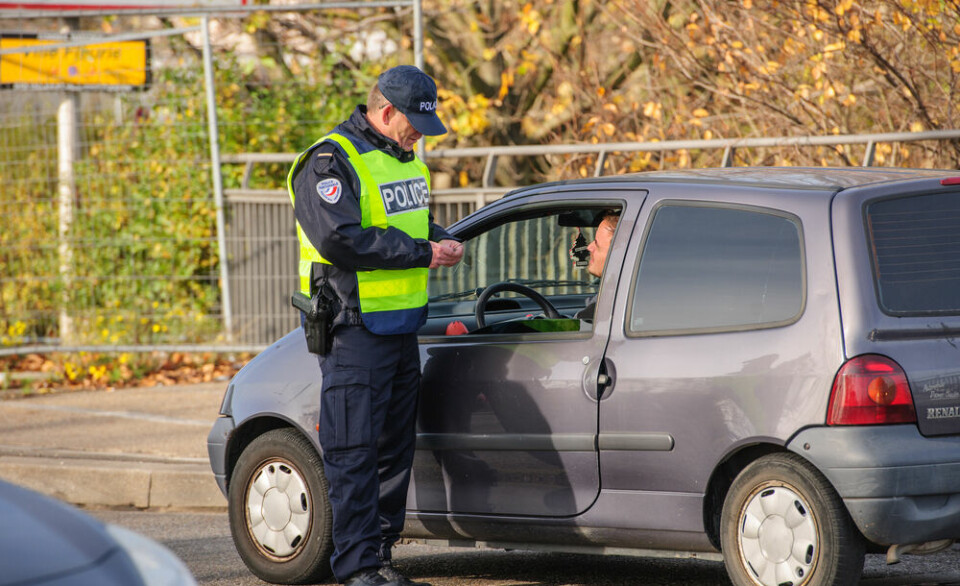-
Many Société Générale customers to be charged additional fees from April
There is some good news for international banking and instant transfers, however
-
Why gas prices in France are rising in April - and by how much
It comes after six consecutive monthly rises. Try these tips to reduce your bills
-
New notaire data suggests easing of Paris property crisis
Property experts have talked of ‘easing pressure’ and ‘breathing space’ after a four-year slump
French fireman sentenced for Acte 23 ‘black bloc’ bag
A French firefighter suspected of plans to dress as a violent “black bloc” protester during last weekend’s gilets jaunes movement has been handed a ten-month suspended sentence.

The firefighter from Val d’Oise (Île-de-France) was arrested on Saturday April 20 in Paris during Acte 23 of the gilets jaunes movement.
Three other men were arrested alongside him, and were also handed suspended sentences of eight to ten months. The prosecution had initially called for the men to be given suspended sentences of one year each.
The arrests took place in a bakery in the 10th arrondissement, after a bag featuring the “sapeur-pompiers Persan” logo was found containing a tear gas aerosol, Molotov cocktails, several firelighters, 17 smoke bombs, and various other firecrackers and firework-style equipment.
The bag also contained a banner reading: “I’m black bloc, don’t panic, sauf si t’es flic (except if you’re police).”
This group denied that the bag belonged to them, and said it had been hastily given to them by a stranger during a scuffle, as police surrounded the group of protesters on Saturday.
One of the defendants, who took the bag, said: “I didn’t think. I reacted [by taking the bag] in solidarity.”
Un sapeur-pompier soupçonné d'être un black bloc interpellé à Paris https://t.co/fkDSXB9Zyf pic.twitter.com/EHbDK74PFc
— BFMTV (@BFMTV) April 20, 2019
CCTV footage at the bakery shows this man taking the bag, dropping it off on a higher floor and going back downstairs, before returning with the firefighter and the other defendants.
At this point, an altercation between the men appears to have broken out.
The accused firefighter, whose unit is in the Paris suburb of Osny, said: “We were angry with him because he had taken a bag without knowing what was inside it. [Our unit] does not have this kind of bag.”
The men claimed that they could “smell petrol”, and wanted to check the contents of the bag and “warn the manager of the bakery”, but the police arrested them at that point.
The firefighter then alleged that the police had gone on to “unpack the bag” and “mix” its contents in with belongings in their own bags, which included several black pieces of clothing.
Gilets jaunes : suspecté d'être un Black bloc, un pompier a été interpellé à Paris lors de l'"acte 23" https://t.co/UcpUUNGSju pic.twitter.com/uXAAN0qvKs
— LCI (@LCI) April 23, 2019
In response to this, the prosecutor reminded the court that the firefighter had previously been charged for “the transport of non-detonating fireworks”: and said: “[The police story] is a theory that I absolutely do not understand.”
The prosecutor accused the men of “working together” and wanting to “dress up like black blocs to light firecrackers, or create much more violent fires.”
The men were also accused of having photos on their phones that showed people dressed in “black bloc” clothing, and other people using tear gas bombs. This is proof of “adherence towards a certain kind of violence”, she said.
Yet, the lawyer for the defence, Lucie Simon, rejected this, asking: “What is the connection between photos and the contents of this bag?”
She accused the police of undertaking “a search done in any old way”, and denied that her client “had had any petrol on his hands”. She also said that no fingerprint analysis had been done on the bag in question.
The "black bloc"
The “black bloc” is a tactic often employed by protesters during large-scale movements. Members dress entirely in black, move together, and often wear masks or sunglasses to cover their faces and eyes. This is said to protect them from the use of tear gas, but is also a way to hide their identities from law enforcement.
The concept is often associated with anarchism and large-scale protests, although members of “black bloc” groups are often deemed to be violent, in large part due to their anonymity and sometimes-sinister appearance.
The term was used during the May 1 demonstrations in Paris in 2018, while the tactic has also been seen regularly during the gilets jaunes protests across France, especially in 2019, with many accused of being some of the main perpetrators of violence during the protests.
Stay informed:
Sign up to our free weekly e-newsletter
Subscribe to access all our online articles and receive our printed monthly newspaper The Connexion at your home. News analysis, features and practical help for English-speakers in France
























